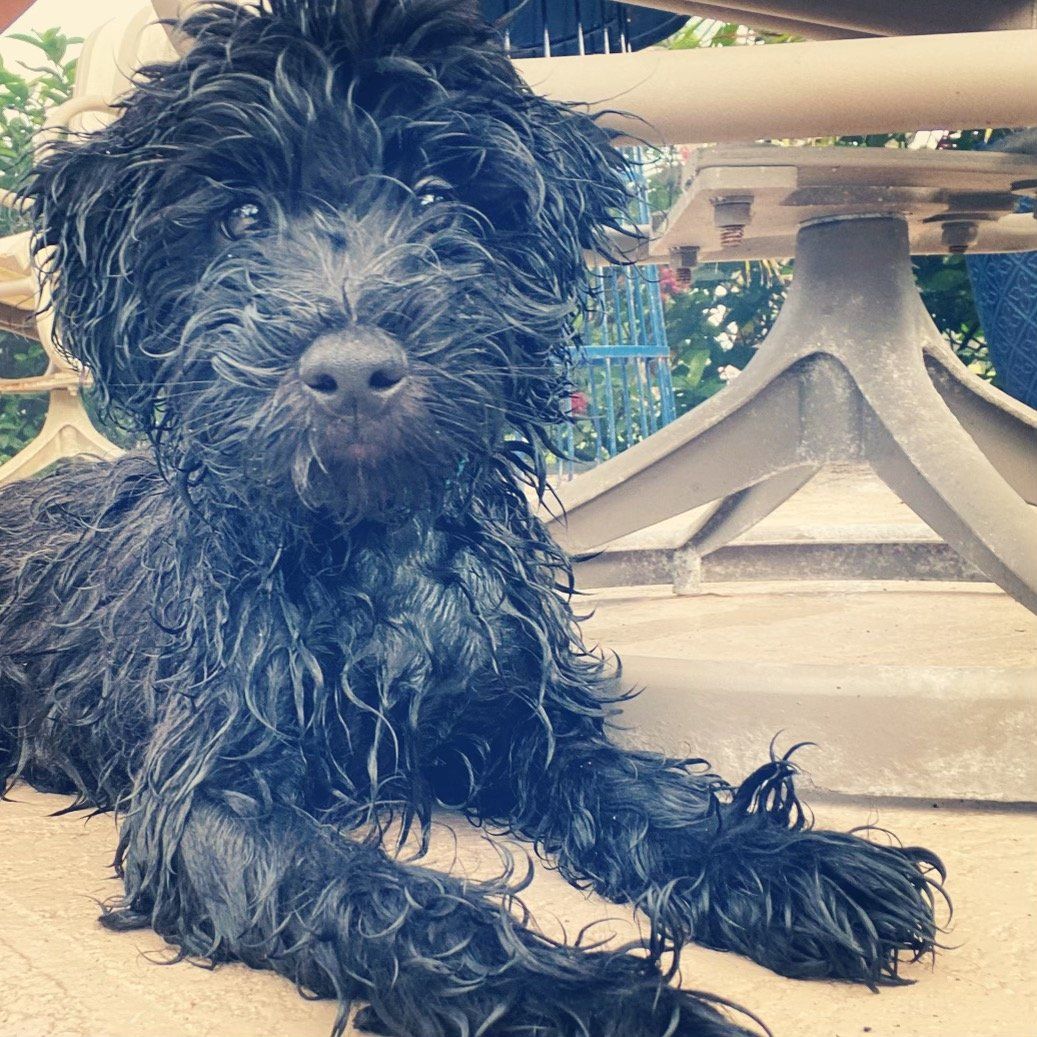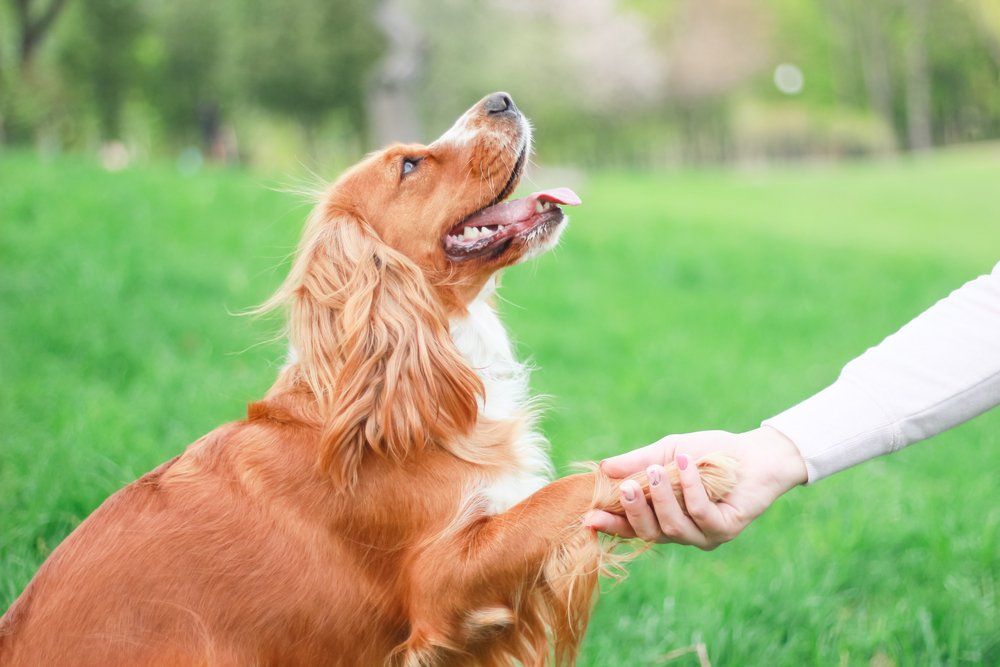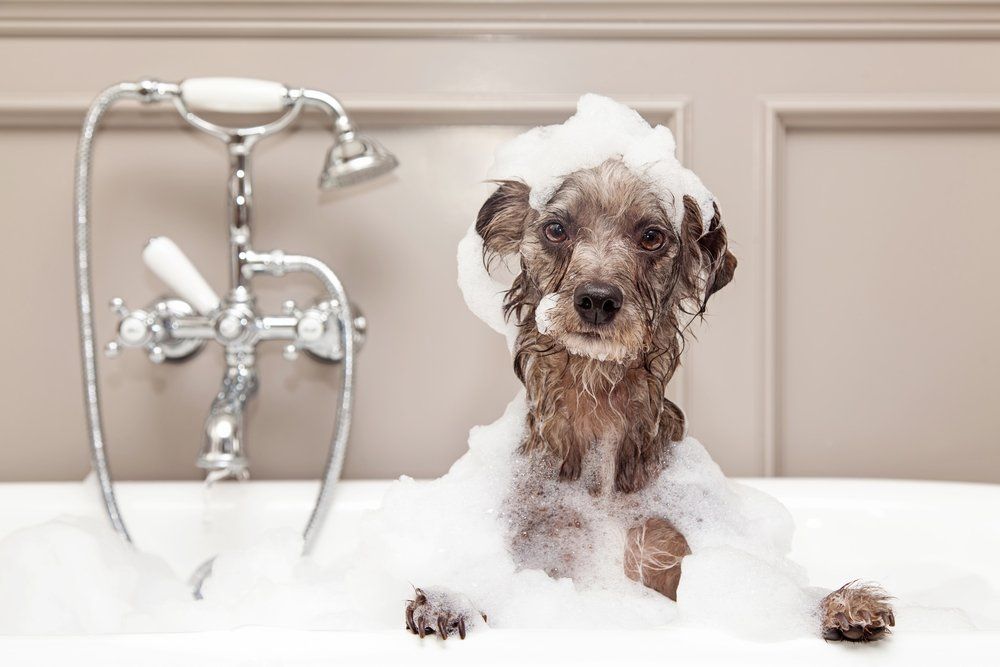Positivity Proves Scientifically to be the Most Powerful Dog Training Tool of All
Naples Top Dog • March 25, 2020
Why Positive Training is the Superior Training Method
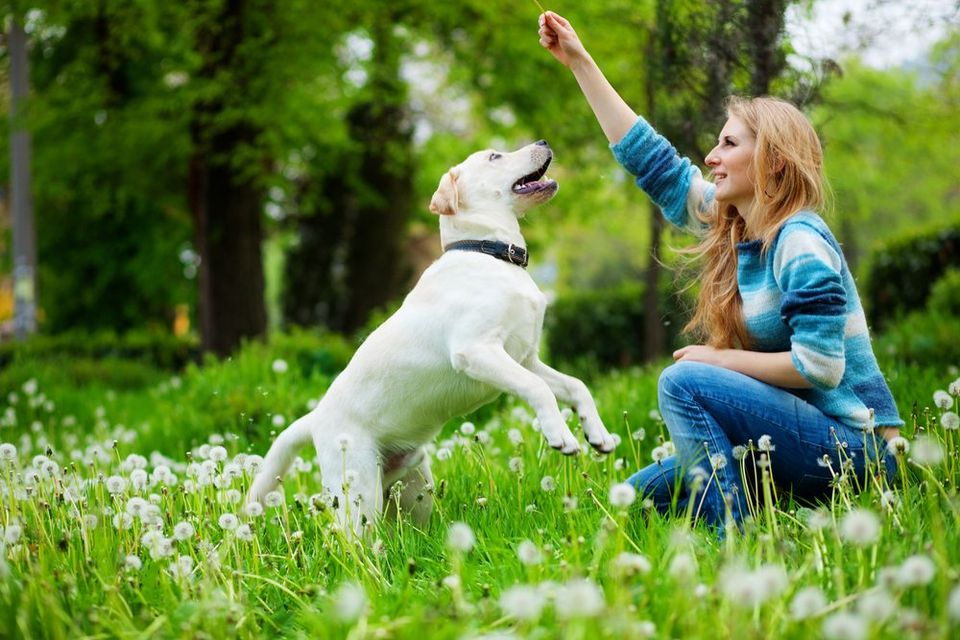
When it comes to choosing a dog trainer in Naples, residents will generally do well to focus on those who make a point of positivity. There are many reasons to prefer positive reinforcement
dog training over other types, even if the latter might be more familiar. In fact, training that incorporates only positive feedback has become the style that most experts now recommend.
A Relatively Recent Development for an Ancient Field
Dogs were first domesticated
somewhere around 15,000 years ago, and people have been training them ever since. The first domesticated dogs were probably quite wolf-like in their appearance and behaviors. That lingering wildness might have made somewhat harsh methods seem appropriate to the relatively unsophisticated people who sought to train them.
Unfortunately, that early mistake came to dominate the discipline of canine training, eventually becoming taken for granted by many trainers. Up until very recently, the common wisdom held that dogs responded best to negative reinforcement that focused on highlighting their mistakes.
By the middle of the 1980s, though, a better grounded and more productive view started to take hold. Positive Dog Training has since become the norm among informed owners and trainers alike.
Positivity Pays Off!
Choosing a Positive Dog Trainer
will enable many benefits compared to opting for the traditional approach. While aversive training might initially seem effective at limiting undesirable behaviors, it has many drawbacks that are now widely recognized. Using positive reinforcement
and simply not acknowledging mistakes will enable advantages related to:
Our Services
- Communication. Dogs aim to please their owners, but how best to do so is not always clear to them. Aversive training that relies on negative reinforcement was once thought to communicate an unambiguous message quite directly. In fact, dogs acquire a much more reliable understanding of what their owners want when positive reinforcement is used instead.
- Reliability. For many years, dog trainers who relied on aversive approaches were aware that their tactics tended to become less and less effective over time. That would often mean a dog that had learned a certain amount would eventually become resistant to further improvement. The endless eagerness of dogs to make their owners and others happy, though, makes positive training much more reliable. Even dogs which seemed to hit a wall when subjected to aversive training will often make plenty of additional progress after receiving praise and encouragement.
- Versatility. Like all other animals, dogs tend to react in unpleasant ways when they feel fearful or angry. The negative nature of most aversive training works against many common goals because of this unavoidable fact. Positive training, on the other hand, can be applied to achieve almost anything a dog might be capable of. That makes positivity a much more versatile tool than negative reinforcement.
A Better Way to Train Any Dog
Choosing a Dog Trainer
who takes the approach of fear free, force free and who focuses solely on positive reinforcement will always be the best way to ensure a happy, well-behaved pet. Although this positive style has quickly become the preferred approach for virtually all acknowledged experts.
Whether with a young dog who needs to be brought up to speed with the basics or a mature one who could use some refinement, positivity has proven to be an especially powerful tool. Dog owners who look into the matter almost inevitably come away happy and satisfied that their beloved pets can be trained without the use of any fear, force or dominance.
Best Regard Positivity Proves to be the Most Powerful Dog Training Tool of All
Choosing a Dog Trainer who takes the approach of a Behaviorist and who focuses solely on positive reinforcement will almost always be the best way to ensure a happy, well-behaved pet. Although this positive style of training has a relatively short history in the grand scheme of things, it has quickly become the preferred approach for virtually all acknowledged experts.
Whether with a young dog who needs to be brought up to speed with the basics or a mature one who could use some refinement, positivity has proven to be an especially powerful tool. Dog owners who look into the matter almost inevitably come away happy and satisfied that their beloved pets can be trained without the use of any negativity.
Contact Us

As our beloved dogs age, their bodies change — slowing down, stiffening up, and requiring a little extra help to stay comfortable. One of the simplest, most impactful ways you can support your senior dog? An orthopedic dog bed. What Is an Orthopedic Dog Bed? Orthopedic beds are designed to distribute weight evenly, relieve pressure on joints, and cushion aging bones. Orthopedic beds use high-density or memory foam. This isn’t just about luxury, it’s about mobility, pain relief, and quality of life. Why It Matters (Especially in Naples!) Here in sunny Naples, tile floors and humid days can make it harder for older dogs to get up and down. Hard surfaces are tough on arthritic joints, and without proper support, even rest time can become uncomfortable. An orthopedic bed: Reduces stiffness and joint pain Aids recovery after walks or grooming Encourages deeper, more restful sleep Keeps senior pups off cold or slippery floors Our Top Pick: The Big Barker Bed Not all orthopedic beds are created equal. One standout is the Big Barker 7” Orthopedic Dog Bed , which was clinically studied by the University of Pennsylvania’s School of Veterinary Medicine. In just 28 days, senior dogs using the Big Barker showed: Improved mobility Reduced pain and stiffness Better nighttime rest and alertness “Experts like Dr. James Serpell of Penn Vet have long emphasized the importance of comfort and environment in a senior dog’s well-being. A supportive bed is one powerful way to care for your dog in their golden years.” You can learn more at bigbarker.com . Naples Top Dogs: Senior Dog Specialists At Naples Top Dogs , we specialize in helping senior dogs thrive — with gentle walks, pain-aware grooming, and advice tailored to every age and stage. We’ve seen firsthand how switching to the right bed makes a world of difference. Need a recommendation? Let us help you find the perfect fit based on your dog’s size, condition, and habits. One of Naples Top Dogs' senior pup, Bear, a 12-year-old German Shepherd, loves his Barker Bed and has noticeably less fatigue and discomfort since using the Barker Bed. From one fellow dog lover to another, we love and trust the Barker Bed. #SeniorDogLove #NaplesTopDogs #OrthopedicDogBed #BigBarker #DogComfortMatters #GoldenYearsPup #SeniorDogCare #DogWellness #PetParenting #DogHealthTips #SpoiledDogLife #TopDogsNaples
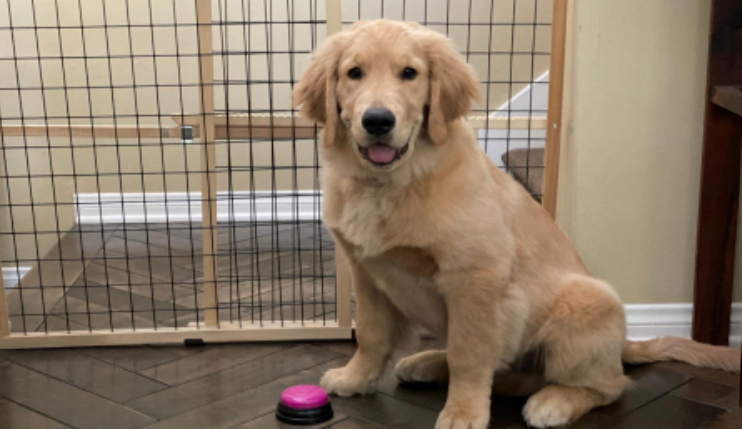
Potty training a puppy is a crucial step in raising a well-behaved adult dog. It requires patience, consistency and the right techniques. With patience, lots of positive reinforcement and a set potty training schedule, you are setting your new puppy up for success. A structured potty training schedule can make the process smoother. It helps your puppy learn when and where to go. Here is a link to Dr. Dunbar’s Sirius Dog Training housebreaking schedule. Potty Training Puppy Schedule Use this schedule, trust us, it works! Incorporating crate training can also be beneficial. It provides a safe space for your puppy and aids in housebreaking. Using a bell is another effective method. It teaches your puppy to signal when they need to go outside. This guide will cover all these methods. You'll learn how to use positive reinforcement and tackle common challenges. With the right approach, potty training can be a rewarding experience for both you and your puppy. Why Potty Training a Puppy Matters Potty training a puppy is essential for maintaining a clean home. Without proper training, accidents can lead to permanent odors and stains. It can also lead to frustration and confusion. You, the human, can become frustrated with your new puppy while your puppy is confused and does not understand what you expect from him. Beyond cleanliness and basic obedience, potty training fosters a strong bond between you and your puppy. It sets the foundation for a trusting and respectful relationship. Training also contributes to your puppy's overall happiness. A well-trained puppy knows what is expected, reducing anxiety and stress from both you and your puppy. Key reasons to potty train your puppy include: ● Keeping your home clean and sanitary. ● Strengthening the bond with your puppy. ● Ensuring your puppy is confident and secure. ● Having an obedient puppy with basic training By committing to effective potty training, you are investing in a happy and well-adjusted dog. This early effort pays off with lifelong companionship and joy. When to Start Potty Training Your Puppy Begin potty training your puppy the moment they arrive home. Young puppies quickly adapt to routines and boundaries. Early training lays a solid foundation. Most puppies start potty training around 5 weeks old. This age aligns with their ability to understand routines. The mother will start to show the puppies where to eliminate and the breeder will also aid in the housebreaking. At 8 weeks, it is imperative to continue the potty training. Talk to your breeder, if you can, about what they did as far as the elimination area. Keep the training consistent and gentle to reinforce learning. “There appears to be a narrow window of opportunity between 7 and 9 weeks of age for introducing house training most efficiently. Puppies started during this time tend to do much better and have far fewer accidents than puppies whose training is postponed until later. During this time, puppies develop location and substrate preferences away from their nesting area.” Steven, Lindsay Applied Dog Behavior and Training, Volume One pg. 67 Signs that your puppy is ready for potty training: ● Awareness of their environment. ● Basic understanding of commands. ● A regular eating schedule. ● You have your puppy already in home and ready to start Training at this critical stage creates lifelong habits. Invest time early to ensure your puppy grows into a well-behaved adult dog. Patience and persistence are key, as puppies learn best from consistent and positive guidance. Setting Up for Success: Supplies and Preparation Proper preparation is vital for effective puppy potty training. Gather all necessary supplies before you start. This ensures a smooth training experience. Create a checklist of essential items, including: ● A sturdy leash for outdoor trips. ● A harness or buckle collar. ● A comfortable, appropriately-sized crate. ● Tasty treats for rewarding good behavior. ● A bell to hang at the door. Prepare a designated potty area outside. This helps your puppy associate the spot with bathroom activities. Make this area easily accessible for quick trips. Always use the same area and use a verbal cue “potty’ “go”, whatever cue you are comfortable with and reward right away. Having these supplies ready streamlines the process. You're equipped to handle training challenges effectively. Preparation reduces stress and promotes consistency. With the right tools at hand, you boost your puppy's chances of success. Patience combined with preparation leads to an efficient and positive potty training journey. Creating a Potty Training Schedule Establishing a routine is key to potty training success. A structured schedule helps your puppy learn when and where to go. Consistency breeds confidence and reliability in young dogs. Start by taking your puppy out first thing in the morning. Follow up with regular potty breaks throughout the day. This consistency reinforces their bathroom habits. Here's a sample schedule to follow: ● Morning: Immediately after waking. ● Every hour or every other hour ● After meals: About 10-15 minutes post feeding. ● Every hour or every other hour. ● Before bed: Last thing at night. Adjust the schedule as your puppy grows and their control improves. You might initially need breaks every one to two hours. Gradually extend the time as your puppy matures. Consistency within your routine helps your puppy develop a strong habit. Use a specific command word like “go potty” to strengthen understanding. Reward your puppy immediately when they succeed. Additionally, watching for cues is important. Signs like sniffing or circling indicate a need to go. An adaptable schedule caters to your puppy's unique needs, making training efficient. Through patience and a well-structured schedule, housebreaking becomes an attainable goal. Using Positive Reinforcement with Potty Training Positive reinforcement is an effective strategy in potty training a puppy. Rewarding good behavior encourages your puppy to repeat it in the future. This method involves using treats, toys and praise to show your dog they've done well. When your puppy successfully potties outside, immediately reward them. Timely rewards strengthen the connection between the behavior and the reward. Enthusiastic praise is just as important as tasty treats. Consider the following list of reinforcement methods: ● Offer a small, tasty treat. ● Give verbal praise with a cheerful tone. ● Affection, like petting or a brief play session. The key is to be consistent with your rewards to establish clear communication. Avoid punishing accidents, as it can cause fear and confusion. Positive reinforcement encourages confidence and helps your puppy learn quickly. Stay patient and persistent, as consistent rewards will yield lasting results.

Training your own service dog is a rewarding journey. It requires dedication, patience, and a deep understanding of dog training techniques. Many people wonder if they can train their own service dog. The answer is yes, but it involves a significant commitment. Service dogs perform tasks to assist individuals with disabilities. They must be well-trained and reliable in various environments. Not all dogs are suitable for this role, so choosing the right dog is crucial. This guide will explore the steps and considerations involved in service dog training. We'll cover essential techniques, legal aspects, and tips for success. Whether you're a dog owner or training enthusiast, this article will provide valuable insights. What Is a Service Dog and Who Needs One? A service dog is specially trained to perform tasks that assist individuals with disabilities. Their role is crucial in enhancing the quality of life for their handlers. Service dogs are required to perform at a minimum two tasks to aid their handler. Service dogs can guide those with visual impairments or alert deaf individuals to sounds. They can also assist with physical tasks, providing mobility support to those with physical disabilities. Service dogs might aid with psychiatric tasks by detecting anxiety attacks. People with various disabilities benefit from service dogs. Some include individuals with: ● Visual impairments ● Hearing impairments ● Physical disabilities ● Psychiatric conditions ● Invisible disabilities ● Rare conditions ● Diabetics The tasks these dogs perform allow their handlers more independence in daily life. It's important to understand the specific needs of the individual to tailor the training accordingly. The bond between a service dog and handler is built on trust and mutual respect, ensuring a successful partnership. Service Dog vs. Therapy Dog: Key Differences While both service and therapy dogs are beneficial, they serve different roles. Understanding these differences is crucial for selecting the right type of assistance. Service dogs are trained to perform specific tasks for individuals with disabilities. These tasks help mitigate their handler's disability and support daily functioning. Service dogs accompany their handlers everywhere, including public spaces, under the ADA. Therapy dogs, on the other hand, are not service animals. They provide comfort and emotional support, often in settings like hospitals or schools. Their primary role is to improve emotional well-being rather than perform task-specific assistance. Key Differences: ● Service dogs perform specific tasks. ● Therapy dogs offer comfort and emotional support. ● Service dogs have broader access rights under the ADA. ● Therapy dogs volunteer in community settings, not for a specific handler. ● Service dogs are required to perform 2 specific tasks to their handler’s disability. ● Tasks training can range from using an emergency phone to finding medication. These distinctions guide both the training and the expectations of these working dogs. Can You Train Your Own Service Dog? Legal and Practical Considerations Training your own service dog is entirely possible and legally supported. The Americans with Disabilities Act (ADA) a llows individuals to train their service dogs independently. This flexibility can be beneficial for those who prefer a personal approach. Most trainers like 300 hours of training in a public setting to assure the dog’s ability to train under any stressful or unanticipated situation. However, this task requires considerable dedication, time, and expertise. Not all dogs possess the qualities necessary for service work. Therefore, it's vital to evaluate your dog's temperament and health before proceeding. Before starting, familiarize yourself with legal requirements and rights in your state. Knowing these can help prevent access issues in public settings. The laws differ from state to state. “The work or task a dog has been trained to provide must be directly related to the person’s disability. Dogs whose sole function is to provide comfort or emotional support do not qualify as service animals under the ADA.” (ADA Requirements February 28, 2020) Considerations for Owner-Training: ● Ensure your dog can perform disability-mitigating tasks. ● Research ADA requirements and local laws. ● Assess your dog's temperament and health. ● Plan for consistent, long-term training efforts. ● Look for an AKC Canine Good Citizen Evaluator ● Pass the AKC Puppy STAR and AKC CGC By understanding these considerations, you can make informed decisions about owner-training a service dog. This knowledge helps in creating a beneficial partnership between you and your dog. Is Your Dog Suitable for Service Dog Training? Before starting service dog training, it's crucial to evaluate your dog's suitability. Not every dog is cut out for this role. A suitable service dog must exhibit a calm temperament. They need to handle stress well and react positively in various environments. Health is also a major factor. A service dog should be in excellent physical condition to perform their duties effectively. Here are key traits to assess: ● Temperament: Calm, focused, and non-aggressive. ● Acceptance of all types of different people, ages, races. ● Willingness to ignore other animals especially other dogs. ● Health: Free from chronic illnesses or debilitating conditions. ● Size and Strength: Capable of performing required tasks. These considerations ensure the dog can meet the demands of service work and support their handler's needs. Essential Dog Training Techniques for Service Dogs Training a service dog involves mastering fundamental skills. These techniques form the backbone of effective service dog training. First, basic obedience is crucial. Your dog must reliably follow commands. Key obedience commands include: ● Sit ● Wait ● Come ● Heel ● Loose Leash Walk ● Touch ● Look ● Down ● Place Next, focus on task-specific training. The dog should perform tasks that mitigate your disability. Identify tasks that will specifically aid your daily life. Positive reinforcement works wonders in training. Reward desired behavior with treats, praise, or play. Consistency is crucial. Stick to routines and commands to reinforce learning. Incorporate socialization into training. Exposure to different environments helps your dog remain calm and focused. Service dogs must adapt to various settings and stimuli effortlessly. Lastly, work on distraction-proofing your dog. Service dogs should focus on tasks amid distractions. Techniques to maintain focus include: ● Gradual exposure to distractions ● Practicing tasks in noisy or busy environments ● Reinforcing focus with rewards These techniques collectively enhance your dog's skills and readiness to serve you effectively. Step-by-Step Guide to Training Your Own Service Dog Training your own service dog is a rewarding journey. It strengthens your bond while empowering you with a capable companion. 1. Evaluate Your Dog's Suitability Not all dogs are fit for service tasks. Assess their temperament, health, and energy levels. Look for dogs that are friendly, eager to learn, and not easily stressed. 2. Begin with Basic Obedience Set a foundation with essential obedience commands. Practice "sit," "stay," "come," and "heel." A solid obedience base is crucial for advanced training. 3. Focus on Service Tasks Identify specific tasks your dog should perform. Tailor training to your unique needs. Common tasks include: ● Guiding the visually impaired ● Alerting to alarms or sounds ● Retrieving essential medical items ● Detecting high or low blood sugar ● Early recognition of migraine headache ● Reminding handler to take medication ● Locating help if someone has fallen or had seizure ● Grounding handler when experiencing PTSD episode ● Finding exit if handler is having anxiety attack ● Keeping space between handler and strangers ● This list can go on and on, we are just naming a few of many 4. Socialization is Key Expose your dog to various environments and people. Ensure they remain calm in public settings. Well-socialized dogs adapt better to different situations. 5. Gradually Introduce Task Training Begin incorporating task-specific training slowly. Break each task into manageable steps. Celebrate small victories as your dog progresses. 6. Public Access Training Ensure your dog behaves well in public. Practice in places like stores, parks, or transport systems. This exposure ensures readiness in real-world scenarios. The Public Access Test can be taken but an approved evaluator. 7. Regular Evaluation Monitor progress frequently. Adjust your techniques as needed. If a strategy isn't working, don't hesitate to try another approach. 8. Seek Support When Needed If challenges arise, consider professional guidance. Experienced trainers can provide valuable tips and support. Collaboration often leads to better outcomes. By following these steps, you pave the way for a competent and reliable service dog. Each step brings you closer to having a perfectly trained assistant by your side. Socialization and Public Access Training Socialization is essential for service dogs to thrive in varied settings. From a young age, introduce your dog to new people, places, and experiences. This exposure helps them remain calm and focused, even in crowded or noisy environments. Public Access Training ensures your dog behaves appropriately in public places. Practice commands in real-world settings regularly. Aim for consistent behavior, regardless of distractions. Focus on the following elements: ● Calmness in different scenarios ● Ability to ignore distractions ● Appropriate behavior in public Regular outings and varied scenarios bolster confidence and competence. With patience, your dog will become a well-mannered partner capable of assisting you effectively. Common Service Dog Tasks and How to Teach Them Service dogs perform various tasks to aid their handlers. Each task should cater to the specific needs of the handler. Training these tasks requires patience and consistency. Start with simple commands and gradually increase complexity. Use positive reinforcement to encourage desired behaviors. Some tasks involve multiple steps, requiring careful breakdown and practice. Here are common service dog tasks: ● Retrieving objects ● Opening doors ● Turning on lights ● Grounding the handler ● Guiding the visually impaired ● Alerting to specific sounds ● Providing stability or balance Customize training to fit your dog's capabilities and your needs. Regular practice helps reinforce learned behaviors. Celebrate small victories to maintain motivation for both you and your dog. With dedication, your dog can reliably perform important tasks, enhancing your day-to-day life. Tips for Success and When to Seek Professional Help Training a service dog can be demanding yet rewarding. Stay patient and celebrate every progress with your dog. Always be consistent in your training sessions. Maintain a positive attitude, and ensure sessions are fun for both parties. This helps maintain the dog's interest and enthusiasm. Know when to seek professional help if challenges arise. Consider contacting professionals if you encounter: ● Behavioral issues ● Difficulty in teaching complex tasks ● Lack of progress over time ● AKC Puppy STAR and AKC CGC Evaluator Professional trainers offer valuable advice and support. They can guide you through tricky parts of the training process, ensuring continued success and growth. Frequently Asked Questions About Owner-Trained Service Dogs People often have questions about owner-trained service dogs. One common query is about the legality of owner-trained dogs. The ADA allows individuals to train their own service dogs as long as they perform specific tasks that aid the handler. Another question revolves around public access rights. Service dogs, whether professionally or owner-trained, have the same rights under the ADA. Some frequently asked questions include: ● What tasks does the service dog perform? ● Do service dogs need special identification? ● How long does training typically take? ● Do I have to buy a dog from an organization? ● Can I use my own dog? ● What is the best breed for a service dog? Understanding these aspects can help clarify any uncertainties about owner-trained service dogs. Naples Top Dogs can answer any of these questions. Conclusion: Is Training Your Own Service Dog Right for You? Training your own service dog can be a fulfilling journey. It requires patience, dedication, and a deep understanding of your dog's needs. This path is not for everyone, considering the commitment involved. However, for many, the effort strengthens the bond between handler and dog. Weigh the pros and cons carefully before deciding. If it suits your lifestyle and needs, the rewards of an owner-trained service dog can be tremendous. With the right approach, it enhances both your independence and companionship. From pet to partner, we are here for you and your dog, if you need us, along your journey.
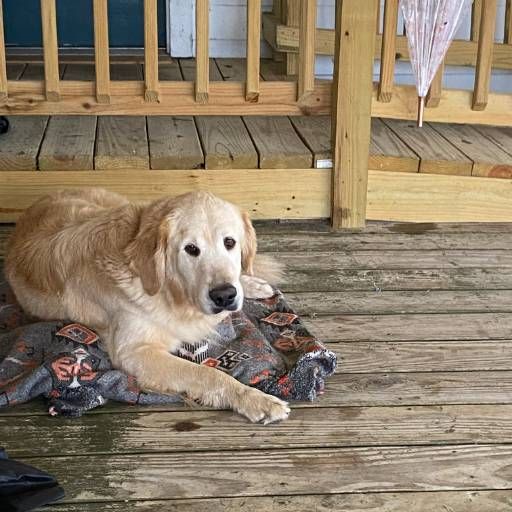
Finding the best dog trainer in Naples can transform your pet's behavior and your relationship. A well-trained dog is not only a joy to have but also a safer companion. In Naples, dog owners have access to a variety of training services. These range from basic obedience to specialized behavior modification. Choosing the right trainer is crucial. It ensures that your dog receives the best care and guidance. Positive reinforcement is a popular method among top trainers. It focuses on rewarding good behavior, making learning enjoyable for dogs. Whether you have a new puppy or an older dog, training is essential. It helps in building a strong bond and understanding between you and your pet. The right trainer will tailor their approach to suit your dog's unique needs. This personalized attention can make a significant difference in training outcomes. In this guide, we'll explore what makes a dog trainer exceptional. We'll also provide tips on finding the best dog trainer near you in Naples. By the end, you'll be equipped with the knowledge to make an informed decision. Your journey to a well-behaved dog starts here. Why Professional Dog Training Matters in Naples Professional dog training is vital for both owners and their pets in Naples. It ensures dogs are well-behaved, safe, and happy. Naples offers many distractions and opportunities for dogs to exhibit negative behaviors. Professional trainers can address these issues effectively. Training not only improves behavior but also enhances a dog’s quality of life. It opens doors to socialization and new experiences. Here’s why professional training is important: ● Ensures safety in public spaces ● Increases obedience and control ● Promotes social skills with other dogs and humans Trainers understand the specific challenges of different environments. They provide strategies tailored to these unique situations. Moreover, training strengthens the bond between you and your dog. It creates a foundation of mutual respect and understanding. Incorporating training early can prevent future issues. The right trainer will guide you through challenges and help set realistic goals. Ultimately, professional dog training creates a harmonious environment in your household. It’s an investment that pays off in countless ways. Key Qualities of the Best Dog Trainers Finding the best dog trainer involves knowing what to look for. The right trainer makes a huge difference in your dog's behavior and happiness. Experience and certification are critical when choosing a trainer. This ensures they have the knowledge to handle various situations. Effective trainers possess excellent communication skills. They need to convey instructions clearly to both dogs and owners. Consider these qualities when choosing a trainer: ● Patience and understanding ● Proven success with various breeds ● Uses humane and ethical training methods Personalized attention is another key quality. Different dogs have different needs, and a tailored approach works best. Look for trainers who engage with your dog positively. Enthusiasm and encouragement can make training a fun experience for your pet. Lastly, testimonials can reveal a lot about a trainer's reputation. Satisfied clients and well-trained dogs are indicators of a competent trainer. Assess these key qualities to find the perfect trainer for your furry friend. Positive Reinforcement: The Gold Standard in Dog Training Positive reinforcement is a powerful tool in dog training. It focuses on rewarding good behavior rather than punishing bad behavior. This approach strengthens the bond between you and your dog. It's built on trust and mutual respect, resulting in a happier pet. Dogs trained with positive reinforcement learn commands more quickly. They are eager to repeat behaviors that bring rewards. The benefits of positive reinforcement include: ● Boosted dog confidence and willingness to learn ● Strengthened owner-dog relationship ● Enhanced ability to resolve behavioral issues Positive reinforcement can take many forms, like treats, praise, or playtime. The key is consistency and timing to reinforce actions effectively. Implementing this method sets a foundation for long-term success. It empowers dogs to think and act positively in various situations. Trainers who specialize in this technique often see remarkable transformations in behavior. They encourage owners to participate in the process actively. This creates a supportive environment essential for growth and progress. Types of Dog Training Services Available in Naples Naples offers a diverse range of dog training services. Each caters to different needs and preferences for dogs and their owners. Understanding these services can help you make informed choices. Basic Obedience Training: This type covers essential commands like sit, stay, and come. It's perfect for new dog owners aiming to instill good behavior early on. Specialized Training: Services such as agility, service dog, or therapy dog training fall under this category. These require a more tailored approach, often incorporating specific skill sets. Behavioral Training : This addresses specific issues, such as aggression or anxiety. It’s often recommended for dogs with a history of problematic behavior. Puppy Training: Focused on socializing puppies, this service establishes good habits from a young age. Group Classes and Private Sessions: Available for those seeking a shared community learning experience or personalized one-on-one training. Each option has its unique advantages, allowing flexibility based on schedules and learning preferences. Knowing what's available can simplify the decision-making process. Naples' range of services caters to any requirement, whether for basic obedience or specialized needs. Choosing the right training path ensures a harmonious relationship with your dog. How to Find the Best Dog Trainer Near You Locating the best dog trainer near you involves diligent research. The right trainer can make a significant difference in your dog's behavior and your satisfaction as an owner. Start by seeking recommendations from fellow dog owners. Local vets and pet stores often have insights into the reputable trainers in your area. Word-of-mouth referrals can be invaluable. Next, conduct online research. Read reviews and testimonials on platforms like Yelp or Google. Look for consistent positive feedback and specific success stories that relate to your needs. When narrowing down potential trainers, consider these key criteria: ● Certification and Experience: Ensure the trainer is certified and has extensive experience. ● Training Philosophy: Verify they use positive reinforcement methods. ● Flexible Programs: Check if they offer various training packages. ● Trial Consultation: See if they provide an initial consultation to assess compatibility. Meeting potential trainers in person is crucial. A face-to-face interaction will allow you to gauge their approach and communication style. Trust your instincts and choose someone who aligns with your goals. Puppy Training: Setting the Foundation for Success Puppy training is essential for developing good habits early. It lays the groundwork for a well-behaved adult dog. Starting young allows for easier behavior molding. Introducing a puppy to the basics like sit, stay, and come fosters obedience. Early training also helps in socialization. Puppies learn how to interact with other dogs and people. A dedicated puppy trainer is invaluable. They tailor programs to suit young dogs' attention spans. The right trainer will incorporate playful methods that keep your puppy engaged. Important components of a puppy training program may include: ● Basic Commands: Teaching sit, stay, come, and leash walking. ● Socialization: Exposure to different environments and stimuli. ● House Training: Creating a routine for bathroom habits. ● Behavioral Guidance: Addressing nipping and jumping tendencies. Puppyhood is a brief period, crucial for instilling lasting habits. With structured training, your pup gains confidence and learns to trust you. This investment pays dividends as your puppy matures into a balanced and happy companion. Group Classes vs. Private Sessions: Which Is Right for Your Dog? Choosing between group classes and private sessions depends on your dog's needs. Each option offers distinct advantages and experiences. Understanding both will guide you to the best decision for your pet. Group classes are ideal for dogs needing social skills. They interact with various personalities, enhancing their confidence. Plus, these classes can often be more budget-friendly. Private sessions, on the other hand, allow for personalized attention. Trainers can focus on specific issues your dog faces. This option is useful for dogs with behavioral problems requiring one-on-one guidance. Considerations when choosing between group classes and private sessions include: ● Socialization Needs: Does your dog interact well with other dogs? ● Behavioral Challenges: Are there specific issues needing focused attention? ● Budget Constraints: Which option aligns with your financial plan? ● Time Availability: Can you commit to fixed schedules or need flexibility? Assessing these factors helps determine which setting benefits your dog most, promoting effective learning and growth. What to Expect: The Dog Training Process Explained Dog training is a journey, not a one-time fix. Understanding the process helps set realistic expectations. Here's what typically unfolds during a training program. The first step is an assessment of your dog's behavior. Trainers observe to identify specific areas needing attention. This assessment helps create a tailored training plan. Sessions are structured to build basic commands first. Your dog will learn to sit, stay, and come through consistent practice. Over time, more complex behaviors are introduced. Monitoring progress is crucial to the process. Trainers adjust methods to suit your dog's unique learning style. Flexibility ensures ongoing improvement and adaptation. Typical training milestones include: ● Week 1-3: Basic commands and establishing routines. ● Week 4-6: Improvement in response and adapting lessons. ● Week 7+ : Reinforcement of learned commands and assessing long-term success. Each milestone signals progress and adapts to maintain momentum. Both trainers and dog owners work collaboratively, ensuring success and a more fulfilling relationship with your pet. Questions to Ask Before Hiring a Dog Trainer Choosing a dog trainer requires careful consideration to ensure the best fit. Start by asking about their training philosophy. Understanding their approach, whether it involves positive reinforcement or another method, is essential for aligning with your values. Inquire about the trainer's experience and certifications. Experienced trainers with relevant credentials often deliver better results. Their background should reflect a commitment to continuing education and evolving methodologies. Additionally, seek information about their success stories and references. Client testimonials provide insight into the trainer’s effectiveness and satisfaction rates. A reliable trainer should readily offer this information. Here's a list of crucial questions to ask: ● What training methods do you use? ● Can you provide references or testimonials? ● What certifications do you hold? ● How do you measure training success? These questions help ensure you choose a trainer who meets your needs and expectations. They also set the stage for a fruitful partnership between you, your dog, and the trainer. Red Flags to Watch Out for in Dog Training Services When evaluating dog training services, certain red flags should raise concern. Beware of trainers who rely excessively on negative reinforcement methods. Such approaches can harm your pet's well-being and affect their behavior negatively in the long run. Additionally, avoid trainers who promise overly quick results. Effective training requires time and patience to ensure lasting behavioral changes. Trainers making guarantees for rapid success may use questionable methods. Here's a quick rundown of red flags to be cautious about: ● Lack of certifications or accreditations. ● Use of harsh training tools (e.g., shock collars). ● Refusal to share client testimonials. Being aware of these signals can safeguard your dog and ensure a positive training experience. Remember, your pet's safety and happiness are paramount. Real Client Success Stories from Naples Testimonials from satisfied pet owners in Naples highlight the transformative impact of quality dog training. These stories not only showcase the skills of the trainers but also the positive outcomes for both dogs and their owners. Consider the case of a once-anxious Labrador who, after undergoing professional training, became calm and well-mannered. The owner's satisfaction was evident, describing the dog as more confident and social with others. Other success stories speak to improvements in communication between dogs and owners. For instance, a family with a high-energy puppy reported fewer behavioral issues and a strong bond formed through training. Highlights from Naples' client success stories include: ● An aggressive dog becoming sociable and friendly. ● Puppies learning essential commands with ease. ● Family pets achieving behavioral harmony at home. These narratives underline the effectiveness of experienced and dedicated trainers in Naples. Investing in the right dog training service can yield such rewarding outcomes. Maintaining Progress: Tips for Ongoing Training at Home Sustaining your dog's training progress at home is crucial for long-term success. Consistency is key; regular practice helps reinforce learned behaviors and commands. Dedicate short sessions daily to keep training effective and engaging. Incorporating training into everyday activities can make a big difference. Use walks, playtime, and meals as opportunities to strengthen commands and behaviors. Keep the atmosphere positive and rewarding to maintain your dog's interest. Here are some practical tips for ongoing training at home: ● Practice commands during routine activities. ● Use rewards and praise consistently. ● Keep sessions short but frequent. ● Stay patient and persistent. ● Monitor and adjust techniques as needed. Consistency and patience will ensure your dog continues to thrive and retain their training. Conclusion: Choosing the Best Dog Trainer Naples Has to Offer Selecting the right dog trainer is crucial for your pet’s development. The right professional can make a significant impact on your dog's behavior and your relationship with your pet. It's vital to consider factors such as the trainer’s experience, positive reinforcement methods, and client testimonials. By carefully evaluating options and asking the right questions, you can find a trainer that meets your needs. Ensuring the trainer aligns with your training goals will help foster a happy, well-behaved dog. Invest in a professional who values your pet's well-being and training success.
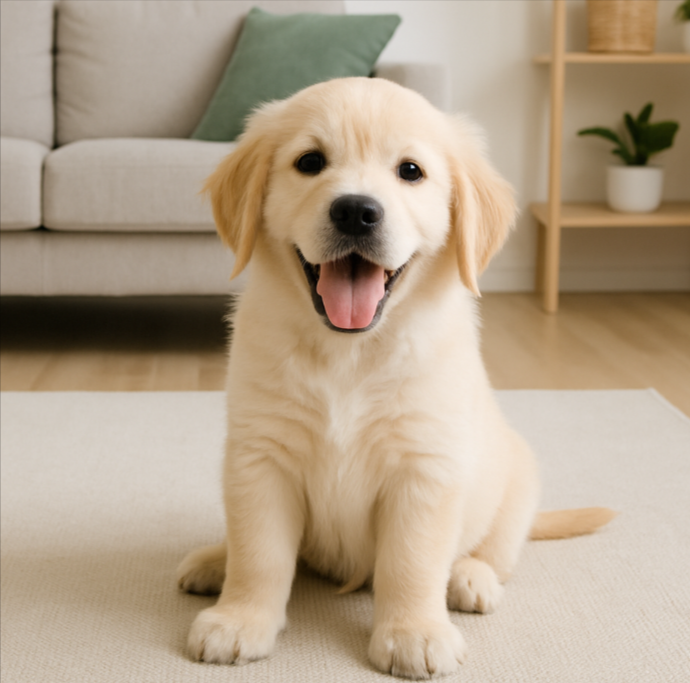
Potty training your puppy is a crucial step in their development. It sets the foundation for a harmonious home life. A well-trained puppy is a joy to have around — and can grow into a well-behaved adult dog. Starting early is key. The sooner you begin, the quicker your puppy will learn. Consistency and patience are your best allies in this journey. Positive potty-training methods build trust and strengthen your bond. Using treats and praise encourages good behavior. Understanding your puppy's needs is essential. Recognizing their signals helps prevent accidents. A structured schedule can make all the difference. Every puppy is unique! Tailor your approach to their personality and remember — a good breeder often starts this foundation early. Why Potty Training Your Puppy Matters Potty training isn’t just about cleanliness — it’s about setting the stage for all future training. An untrained puppy can cause stress, damage floors and furniture, and even put their health at risk. Consistent potty training: Reduces stress for both you and your puppy Prevents property damage Promotes good hygiene and health Builds a strong, healthy relationship Reduces the risk of re-homing When to Start Potty Training Start the moment your puppy comes home. Puppies learn routines quickly when young. Best times to begin: Immediately upon arrival When they’re alert and energetic When you can supervise consistently Early training = fewer accidents + faster success. Understanding Your Puppy’s Signals Watch for these cues: Sniffing around Circling one area Sneaking away Whining or barking unexpectedly Act quickly to link outside trips with relief. Keep a journal of successes and accidents to track patterns. Setting Up for Success Tools you’ll need: Designated outdoor potty spot Sturdy leash Crate for training Playpen for supervision Enzymatic cleaner High-value treats Keep the potty spot consistent — your bathroom doesn’t move, and neither should theirs. Creating a Training Schedule Puppies have small bladders — frequent breaks are necessary! Sample schedule: First thing in the morning 15–30 min after meals Every 1–2 hrs depending on size Before bedtime Positive Potty-Training Methods Reward immediately after success Use a potty cue like “Job” Mix treats, praise, and playtime as rewards Keep a success & accident log Patience is key — some puppies catch on quickly, others need more time. Step-by-Step Guide Keep a consistent routine Always use the same potty spot Add a verbal cue Reward immediately Handle accidents calmly Handling Accidents Stay calm — no punishment Clean thoroughly with an enzymatic cleaner (Rocco & Roxie recommended) Review your schedule for missed cues Crate Training & Confinement Choose the right size crate Introduce it positively Use for naps & sleep Pair with regular potty breaks Also, use playpens, baby gates, or tethering for supervision. Troubleshooting Common Challenges Common problems & solutions: Inconsistent behavior → Stick to a set schedule Regression → Go back to basics Weather issues → Gradual outdoor exposure Frequent accidents → Vet check for UTI Adjusting for Breed & Personality Independent breeds → More patience, extra rewards Eager-to-please breeds → Consistency works best Sensitive pups → Calm, supportive environment Tracking Progress Keep a potty journal: Record times & locations Adjust as needed Celebrate small wins FAQs How long does it take? Usually, a few weeks to a couple of months. What if accidents happen often? Review your schedule & signals — and consider professional help if needed. Conclusion Potty training your puppy is a journey of patience, consistency, and love. Celebrate the little victories, stay positive, and enjoy watching your puppy grow into a confident, happy dog.

Naples Top Dogs receives a few phone calls per week to assist with recent changes made by airlines effective April 2021. This is regarding the use and updates of emotional support animals and service animals on flights. It seems like most airlines caught on to some of the abuse of the Air Carrier Access Act or ACAA written in 1986.


